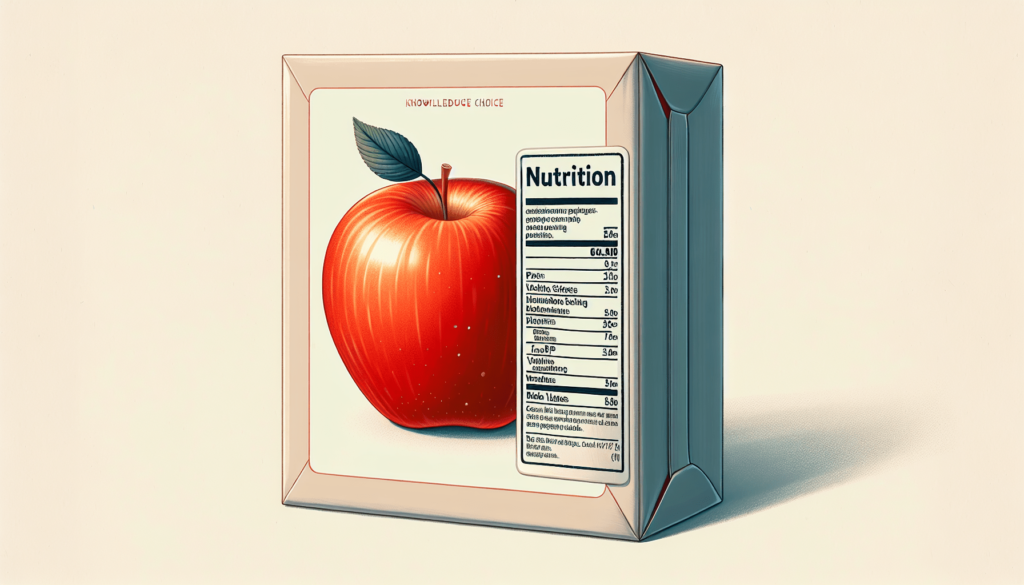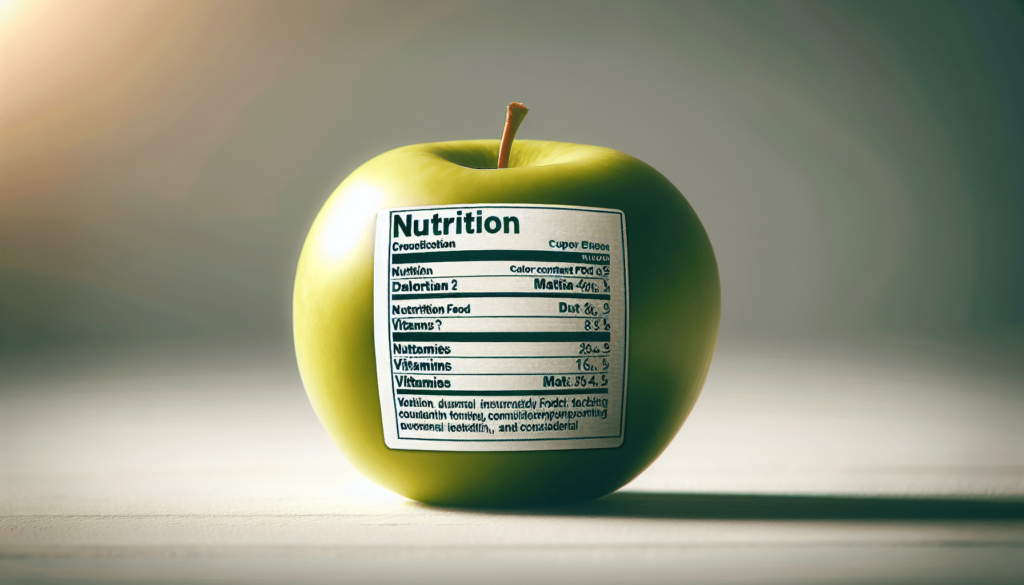Do you ever stare at a food label like you’re trying to crack the Da Vinci Code but suspect there’s not going to be a book deal in it for you afterward? Me too. It seems like just when you think you’ve got it figured out, someone comes along and changes the rules, or suddenly “organic” means it’s been grown while being read bedtime stories. Who knew corn could have a more nurturing childhood than you?
Why Understanding Food Labels Is Important
Before you roll your eyes and go back to tossing random items into your shopping cart, let’s chat about why understanding these baffling hieroglyphics is kind of a big deal. You are what you eat, right? Incorrect. You are what you think you eat while standing in the snack aisle debating between kale chips and a suspiciously affectionate brand of chocolate. Understanding food labels can help you make informed decisions, ensuring you’re not accidentally living off sugary cardboard disguised as breakfast cereal.
The Illusion of Choice
There’s often more lurking in your food than what you’d expect, akin to a surprise party but sans balloons and sometimes with a touch of sodium tripolyphosphate. Many products cleverly disguise themselves with words like “gluten-free,” “natural,” or even the mysterious “artisanal.” But what do these mean? And shouldn’t artisanal bread come with a pottery class? Unfortunately, it’s not as straightforward as you might hope.
Your Health, Your Way
Deciphering food labels can empower you to cater to your specific needs, whether you’re avoiding carbs on threat of re-summoning your high school acne or you’re convinced garlic powder is a superfood. Ensuring you know what’s in your food enhances your ability to make choices supporting your lifestyle and health goals, none of which usually involve rediscovering the existential dread of opening your bank statement after a health food store visit.
Breaking Down the Food Label
Let’s dissect a food label, shall we? Get your magnifying glasses ready.
Serving Size Shenanigans
Right at the top, you’ll spot the serving size. Spoiler alert: it’s always way smaller than you think. If human beings actually ate a quarter of a cookie and were satisfied, the dessert industry would collapse overnight. Understanding this helps avoid the pitfall of thinking a “100-calorie” snack is just 100 calories, and not actually 400 after you gobble down the entire packet while binge-watching your guilty pleasure reality show.
Calories and Caloric Surprises
Calories measure energy, specifically how much energy you will expend Googling if “partially hydrogenated oil” is a real food item or a futuristic fuel source. Keep an eye on the calories per serving to align with your health objectives—not to suggest calorie counting is the new rock and roll, but it does keep you from accidentally power-loading an entire day’s worth of energy into one regrettable snack choice.
Nutrient Nonsense: Fats, Sodium, Sugars, and Carbs
The breakdown of nutrients is where things get trickier than your Aunt Edna’s infamous treasure map cake recipe.
Fats: More Than Mr. Nice Guys
Different kinds of fats are like different kinds of guests at a party—some you want to befriend, others you’d gladly confine to the backyard. Saturated and trans fats generally get the side-eye because they can climb into your body and set up camp, while monounsaturated and polyunsaturated fats are generally acceptable guests, bringing nice little gifts like improved heart health.
Sodium: The Saltiest of Them All
Sodium lurks more sneakily than a teenager trying to blend in at a family reunion. It’s vital to be mindful of your sodium intake, especially since it’s often hiding in foods you’d never suspect, like certain cereals. Who knew your breakfast could be so salty? No amount of milk can wash away that betrayal.
Sugars: Sweet, Sweet Lies
When it comes to sugars, less is often more. Be cautious of added sugars which might sound benign but are often unnecessary. They are the flashy influencers of the nutrient world, offering instant allure and long-term dissatisfaction. Natural sugars, primarily found in fruits, are more like the grounded, down-to-earth friend group. They’re sweet, but in a genuine way.
Carbs: Your Silent Companion
Carbohydrates are not the enemy, despite the bad PR from strident low-carb enthusiasts. Instead, they are another form of energy. Focus on complex carbohydrates like whole grains and avoid simple carbohydrates that act like sugar’s charming but slightly irresponsible cousins.

Decoding Common Claims
Organic: More Than Just a Childhood Storytime
When a product claims it’s “organic,” it means at least 95% of its ingredients are organic. This excludes genetically modified organisms (GMOs) and synthetic additives, except when processed by elves in the dead of night. Kidding. Mostly.
Non-GMO: Mother Nature’s Way of Saying “Nope!”
Non-GMO labels mean the product doesn’t contain genetically modified organisms. In a world where soybeans can have superhero DNA, knowing your food hasn’t been moonlighting as a science experiment can be reassuring.
Natural: The World’s Greatest Mystery
The label “natural” should be greeted with skepticism and possibly the same dubious side-eye you’d reserve for expired yogurt. While it implies no artificial flavors or colors, it doesn’t guarantee anything more impressive than if the factory workers whistled tunes while on shift.
Whole Grain: Because Grain Needs Its Time, Too
Fully embracing whole grains means the grain’s three parts—the bran, germ, and endosperm—are all present. These components are packed with fiber and nutrients, unlike “refined” grains that missed the memo on staying whole and healthy.
A Few Words on Allergens
Allergens: The Sneaky Bandits of the Food World
Food allergens—like peanuts, gluten, and shellfish—are like uninvited relatives turning up and lurking around. Check for allergen information if you have specific dietary needs or want to avoid an unexpected split from your peaceful routine.
Gluten-Free: Not Just a Health Trend
“Gluten-free” isn’t just the chant of health-conscious crowds; it’s a necessary designation for those with celiac disease or gluten sensitivity. Products bearing this label must not contain gluten, which means they’re engineered safe for enterprising bread enthusiasts with wheat restrictions.

Navigating the Ingredient List
Ingredients: Listed in Order of Prevalence
The ingredient list on a food label is like a band line-up, read from most to least prevalent. It’ll tell you what makes up the product, which is handy for avoiding pseudo-food confetti like high-fructose corn syrup, a sweetener as unnecessary as a nudist at a knitting convention.
Unpronounceable Ingredients: A Chance to Brush Up on Latin
If an ingredient sounds like it’s moonlighting as a chemical in a thriller movie, it might be worth a deeper dive into what it does for your food or your health, possibly starting with, “Is it safe to let this past my lips?”
Specialized Diet Labels
Vegetarian and Vegan: Because Plants Have Feelings
Vegetarian and vegan labels let you know if a product avoids animal products and byproducts. These labels help ensure you aren’t caught off-guard wondering why your almond milk tastes suspiciously bovine.
Keto-Friendly: Carbs? What Carbs?
Keto-friendly labels are for those maximizing their bad jokes about bread while minimizing carbs in their diet. Keep an eye out for these markers if you’re counting carbs as closely as you count your yoga breaths.
The Verdict: Food Labels As Your New Best Friend
In this wild ride of food label analysis, one thing’s for sure: reading and understanding them can dramatically affect your approach to healthy eating. Although it might not land you on the cover of a mystery-solving digest, it does promise a newfound confidence as you stride past the snack aisle. Being informed about food labels arms you with the knowledge to maneuver through your unique dietary landscape without tripping over mystery ingredients or dubious claims. So, next time you’re in the grocery store, you’ll be ready to decode that label like a professional, empowered to make healthier choices that suit right you—without sacrificing too much of your supermarket circus time.
